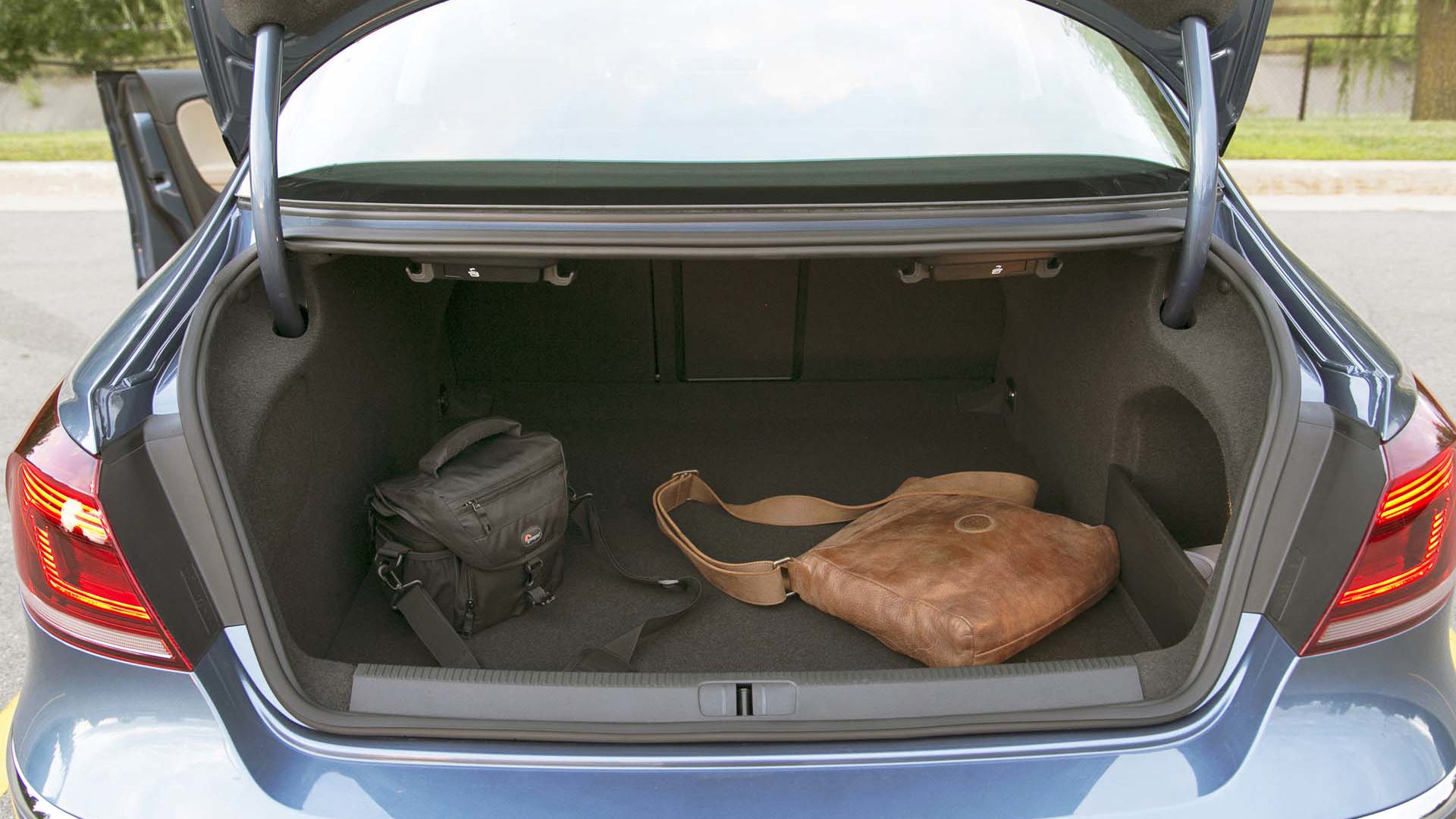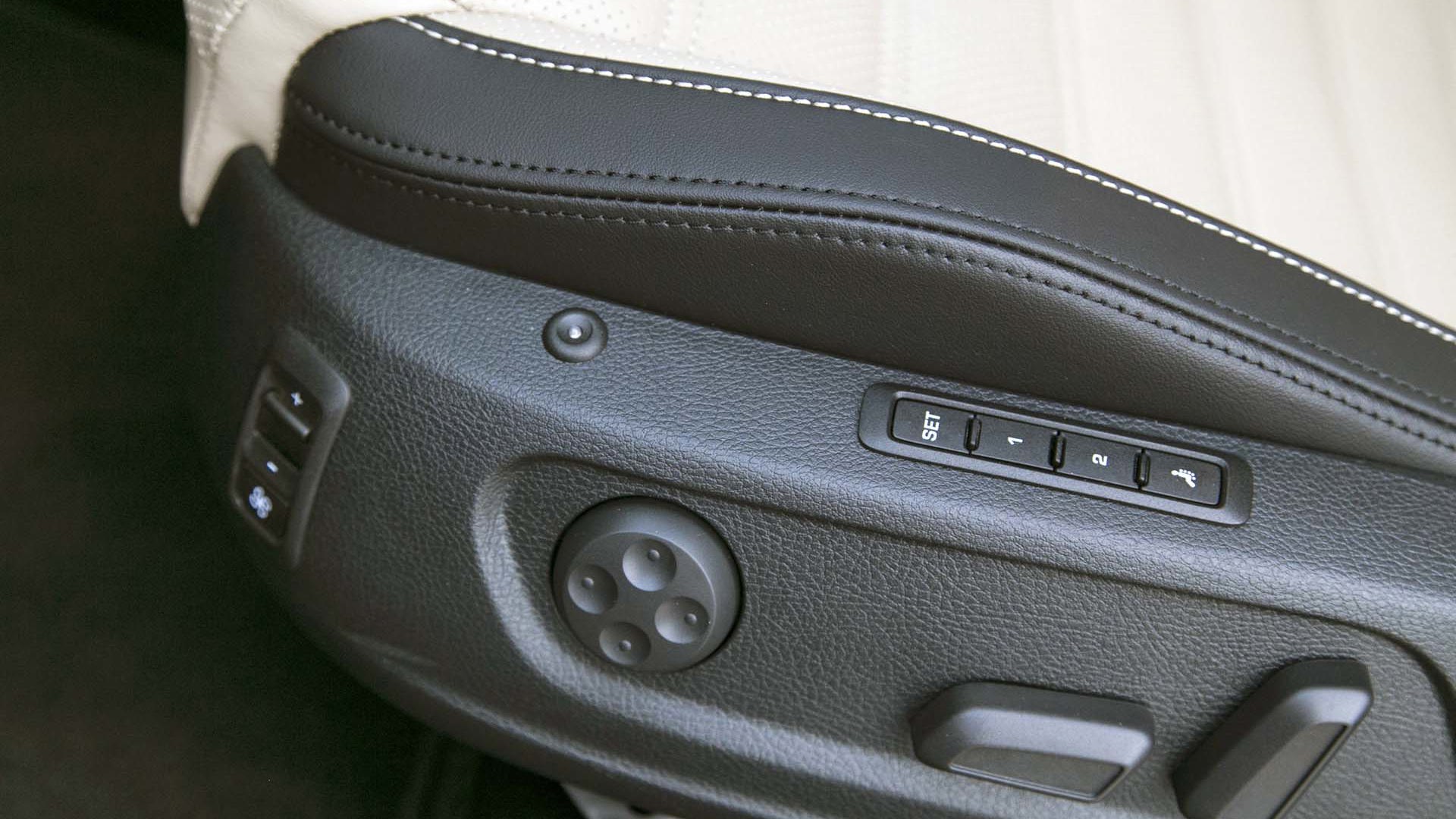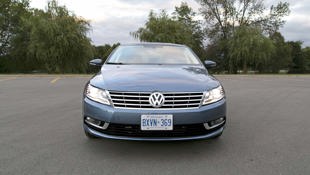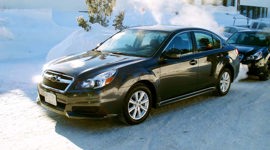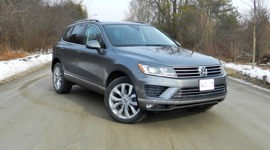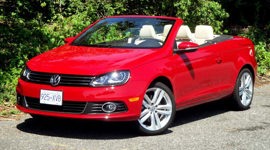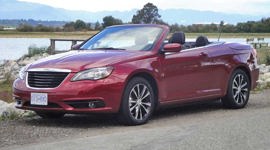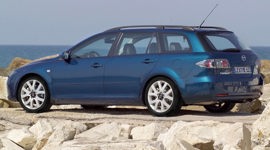 AutoTrader SCORE
AutoTrader SCORE
-
EXTERIOR STYLING9/10
-
INTERIOR8/10
-
PERFORMANCE7/10
-
COMFORT8/10
-
FUEL ECONOMY8/10
Remember a time when there were well-defined categories in the automotive universe? A customer could stroll into a dealership and order up a compact hatchback or a good ol’ truck-based SUV. Those days, when most folks knew a 4-door as a sedan, seem like ancient history now. Today carmakers are doing everything they can to squeeze a few extra dollars out of the car-buying public by blurring the lines between those otherwise clearly delineated automotive subgroups and slicing off ever-smaller fragments of the pie.
If there’s one thing we can count on, it’s that a “coupe” – regardless of it wearing two doors or four – will be better looking than its sedan counterpart...
If there’s one thing we can count on, it’s that a “coupe” – regardless of it wearing two doors or four – will be better looking than its sedan counterpart and that it will definitely cost more money despite usually having fewer parts.
While generally accepted by most that a coupe is a two-door with a roofline lower than a sedan’s, one can find four-door “coupes” dating back several decades in one form or another. And while cars like the 4-door Saturn Ion Coupe or Mazda RX-8 looked more like a traditional 2-door coupe with some extra little half-doors slapped on, it was Mercedes-Benz who really led the charge with these swoopy-looking premium sedans, err… “4-door coupes” when the CLS was introduced in 2005.
Three years after Benz’s lead, Volkswagen followed suit with the beautifully stylish CC version of its mid-sized Passat sedan, and in recent years both BMW and Audi have jumped on the bandwagon. The CC, however, is a much more affordable offering than its premium branded alternates.
Vanity was the only reason to choose a first generation CC, then known as the Passat CC due to the shared mechanicals with its stodgier cousin. If you wanted a sleek, fashionable German sedan but couldn’t swing the lease payments on the swoopy Mercedes, the Passat CC made for an affordable – if somewhat dynamically inferior – choice.
Then a few years ago Volkswagen’s executives on this side of the Atlantic decided that the Passat Americans really wanted was an enormous, highly-conservative and more affordable sedan (rather like creating a Volkswagen Impala), to the more luxurious and driver-focused previous generation. And with that, the CC was a Passat no more.
Today, if North American buyers want their mid-sized 4-door Volkswagen to be the real European deal, they need to pick up one of these made-in-Deutschland CCs, and what they’ll get is a nice driving, and still very stylish machine.
Two doors, classic styling – Find of the Week: 1970 Volkswagen Karmann Ghia Coupe
Our test car, a new 2016 CC in Highline trim finished in Harvard blue (new for 2016), looks like a proper, Euro luxury sedan, just without the premium badge. The CC’s exterior design – largely unchanged since its inception – remains its strongest quality. It’s a timeless look that clearly puts fashion over function.
From a passenger perspective, that fashion can become problematic for the function part, such as when dealing with ingress and egress of the CC. The windshield is so steeply raked into the arcing roofline, that dropping down into the driver’s seat is likely to result in a smacked head if you’re of shorter stature, and a bruised shoulder if you’re of average height or greater – so care is required.
Getting in and out of the rear seat can be even worse. Once inside, the legroom is ample, but headroom for anyone over 5'9" or so will find it a squeeze. Plus when seated, the view out requires ducking to see past the steep C-pillars and roofline.
The squashed profile also produces a small rear window opening, which, when combined with exceptionally broad B-pillars, dramatically reduces outward visibility to the rear and rear 3/4 view.
Oh, and the coupe-mandated frameless side glass leaked around the driver’s window during a car wash.
That is largely where the complaining ends for the CC, which is otherwise a great place to spend some time. The materials are all of a high tactile quality and visually complement each other. The high contrast beige and black leather and plastics are nicely accented with metallic flourishes throughout resulting in a dramatic, yet tasteful cabin.
The seats are finished in soft leather, with the front seat occupants enjoying the riches of a throne that is both heated and cooled. The driver’s seat offers an even better level of luxury with a massaging function that was particularly welcome while stewing in Toronto-area traffic.
The thick-rimmed, leather-wrapped steering wheel also feels great in hand and is shaped to give an unrestricted view of the excellent and highly legible primary gauges.
Volkswagen has updated its aging 6.33” touchscreen infotainment system for 2016 to include Apple, Android and MirrorLink app connections, along with a 12-speaker Dynaudio music system. The navigation maps look a little low-rent by today’s standards, and doesn’t react to menu inputs as swiftly as some of the newer systems (like the great ones VW is inputting into the ’16 Golfs, for instance), but it’s tolerable.
That great sounding Dynaudio system can be properly enjoyed in the CC thanks to the considerable sound insulation that goes into the car. Even at highway speeds the CC suppresses wind and road noises very well.
For 2016 the CC can no longer be ordered with Volkswagen’s aging, but smooth 280 hp, 3.6L V6, making the ubiquitous 2.0 turbo four cylinder the only engine of choice. While sticking with only a 4-banger may seem counter to the CC’s luxury car pretenses, Volkswagen has done a great job of keeping the little 4-pot smooth and quiet.
What’s more, it’s a good, torquey engine too, and when called upon for passing power, the little turbo delivers more punch than its 200 on-paper horsepower suggests. When driven with a bit of gusto, the 6-speed DSG transmission provides rapid-action shifts, and for 2016 becomes the only transmission offered for the CC (with the 6-speed manual going away like so many others). Although not intended to be a drag racing machine, the CC has enough pep to surely satisfy most people’s motoring needs.
Around town, however, the combination of that dual-clutch transmission and a small-displacement engine that suffers a bit of off-boost lag makes for some herky-jerky motions when pulling away from a stop. With a gentle foot, it’s manageable, but in wet or snowy conditions will likely have the driver facing a lot of traction control light flashes as the car tries to manage the non-linear thrust.
During its week of predominantly highway driving with us, we saw an average of 7.7 L/100 km, which is not bad at all for a sizeable entry level luxury car like this. In proper luxury car tradition, the CC prefers its fuel to be of a premium nature.
In opting for this “proper” European Volkswagen, it’s hoped by aficionados that one would be getting a better handling car, one perhaps tuned at the Nürburgring. In reality, like the larger Yankee Passat, this new CC puts more focus on a supple ride than overt sportiness. The CC keeps its composure reasonably well, but even with the sporting all-season tires (mounted to new 18” Lisboa wheels), this sedan leans more toward luxury than corner carving.
The up side is a ride, especially on the highway, that is refined and pleasingly smooth, soaking up all but the deepest potholes without much commotion reaching the occupants. Between the massaging seats, quiet solitude and magic carpet ride, the CC makes a pretty convincing case as a proper luxury car.
Despite its foibles stemming mostly from the rakish styling, the CC is a thoroughly enjoyable car. Its greatest challenge comes from realization that there are several contemporary competitors, a few of which have premium brand badges affixed to their noses (like the Acura TLX and Lexus ES 350, and even the brand new Nissan Maxima), that can be had for the same – or less money. What’s more, the CC’s own in-house Passat cousin offers more passenger and cargo space, and can still be had with the 3.6L V6 – a feature many buyers may believe is a more fitting choice for a luxury car. A fully loaded Passat rings the register at roughly the cost of a “base” Sportline CC, calling into question the value of the CC.
Still, for those looking for a truly beautifully styled machine that ignores the trendiness in design exhibited by cars like the new Maxima, or those who simply want the cachet of a 4-door coupe, the CC is a great choice.
| Warranty: 4 years/80,000 km; 5 years/100,000 km powertrain; 12 years/unlimited distance corrosion perforation; 4 years/80,000 km roadside assistance Competitors: |
| Model Tested | 2016 Volkswagen CC Highline |
|---|---|
| Base Price | $43,825 |
| A/C Tax | $100 |
| Destination Fee | $1,605 |
| Price as Tested | $45,530 |
|
Optional Equipment
None
|
|












